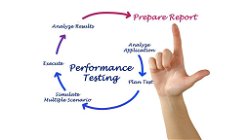The Importance of Defining Your Target Audience for Effective Marketing
Swati Mandana
. 3 min read
Your target audience refers to the specific group of consumers most likely to want your product or service, and therefore, the group of people who should see your ad campaigns. Target audience may be dictated by age, gender, income, location, interests or a myriad of other factors. By leveraging data analytics, user behavior insights, and innovative technologies, developers collaborate with marketers to ensure that their campaigns effectively grab the attention of the target audience among a sea of brands and advertisers. The buying process is in the hands of the customer, and with the expertise of developers, marketers can optimize their strategies to deliver engaging and relevant content to their desired audience.

Why do you Need a Target Audience?
Understanding your target audience is not just important, it is critical to the success of your business. By gaining insights into the needs, preferences, and behaviors of your potential customers, you can craft highly effective messaging and content that truly resonates with them. Whether you cater to small businesses or enterprise-level corporations, your branding and marketing collateral must be tailored to meet the unique needs of your target audience.
Why Should You Define Your Target Audience?
Defining your target audience can also significantly boost the results of your marketing efforts. By identifying the group of people most likely to benefit from your product or service, you can create campaigns that speak directly to their needs and interests. This requires thorough research and analysis to gain a deep understanding of your audience's traits and preferences. Assuming that your target audience is just like you can be a costly mistake that hinders the growth of your business.
Employ Multi-Segment Marketing
In addition to identifying your primary target audience, employing multi-segment marketing can help expand your customer base. This approach involves leveraging various marketing channels, such as digital marketing, social media, PR, and content writing, to target different market segments that have similar product needs. This enables you to tailor your messaging to different decision makers along the sales funnel, leading to increased sales and customer loyalty. Ultimately, by defining your target audience and employing a multi-segment marketing strategy, you can achieve your marketing goals and grow your business exponentially.
Target Market vs Target Audience
You’re probably familiar with the term “target market”. A target market and target audience are similar but not interchangeable. A target market refers to a group of people with common characteristics and behaviors that business owners target in their marketing strategy. A target audience, on the other hand, is a subset of the larger target market and consists of a specific group of consumers within the larger group. The first step in finding the right audience to market your business to is to identify your target market. This lays the groundwork for where to focus your efforts.
Target Audience vs Market Audience
A target market refers to a predefined subset of consumers that a business plans to cater to with its products or services. A target audience refers to a smaller subset of individuals (within that market) that the business hopes to reach with individual marketing campaigns or promotional efforts (ads, events, etc.). You’re planning an event for New York Fashion Week and want real-world customers there. However, since the event may only be accessible to those in New York, you might run a promotional campaign (e.g., an email marketing campaign) targeting only those in New York.
Track Your Analytics
If your business has a website, is active on social media, or if you’ve posted digital ads, chances are your data is already being tracked. There are plenty of data analytics options available in all price ranges, like Google’s free Analytics tool. Social Media Analytics tools on platforms like YouTube, Snapchat, and Facebook already track all your social media marketing efforts automatically. Pay attention to the demographic information that appears in your analytics.
Conclusion
In conclusion, understanding your target audience is essential for the success of your business. By identifying the specific group of consumers who are most likely to want your product or service. Defining your target audience can also significantly boost the results of your marketing efforts, leading to increased sales and customer loyalty. Employing a multi-segment marketing strategy can help expand your customer base by targeting different market segments with similar product needs. Overall, taking the time to define and understand your target audience is crucial for achieving your marketing goals and growing your business.
More Stories from
Embracing the Remote Work Revolution: Pros and Cons for Businesses and Employees
This article explores the significant growth of remote work over the past decade, driven by technological advancements and changing work cultures.
Common Challenges Facing Small Businesses: Overcoming Obstacles to Success
This article discusses the common challenges that small businesses face in today's economic and social environment.
Unlocking Business Growth: Harness the Power of Web Solutions
Embrace the power of the internet to unlock your business's true potential and propel it towards unprecedented growth.
A Comprehensive Guide to Performance Testing: Stages, Metrics, and Tools
It explores the importance of performance testing in the development lifecycle, the types of performance testing, and the metrics used to measure performance.
Effective Marketing Techniques for Small Businesses on a Tight Budget
This article discusses effective marketing techniques for small businesses with limited budgets.









.png?width=40&aspect_ratio=1:1)
.png?width=40&aspect_ratio=1:1)

